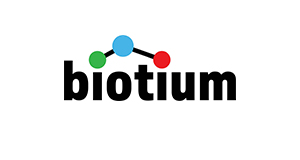CD8A (Cytotoxic-&Suppressor T-Cell Marker) (rC8/468), CF740 conjugate, 0.1mg/mL
CD8A (Cytotoxic-&Suppressor T-Cell Marker) (rC8/468), CF740 conjugate, 0.1mg/mL
SKU
BTMBNC741867-500
Packaging Unit
500 uL
Manufacturer
Biotium
Availability:
loading...
Price is loading...
Description: CD8 is a cell surface receptor expressed either as a heterodimer with the CD8 beta chain (CD8 alpha/beta) or as a homodimer (CD8 alpha/alpha). A majority of thymocytes and a subpopulation of mature T cells and NK cells express CD8a. CD8 binds to MHC class 1 and through its association with protein tyrosine kinase p56lck plays a role in T cell development and activation of mature T cells. For mature T-cells, CD4 and CD8 are mutually exclusive, so anti-CD8, generally used in conjunction with anti-CD4.It is a useful marker for distinguishing helper/inducer T-lymphocytes, and most peripheral T-cell lymphomas are CD4 /CD8-. Anaplastic large cell lymphoma is usually CD4 and CD8-, and in T-lymphoblastic lymphoma/leukemia, CD4 and CD8 are often co-expressed. CD8 is also found in littoral cell angioma of the spleen.Primary antibodies are available purified, or with a selection of fluorescent CF® Dyes and other labels. CF® Dyes offer exceptional brightness and photostability. Note: Conjugates of blue fluorescent dyes like CF®405S and CF®405M are not recommended for detecting low abundance targets, because blue dyes have lower fluorescence and can give higher non-specific background than other dye colors.
Product origin: Animal - Mus musculus (mouse), Bos taurus (bovine)
Conjugate: CF740
Concentration: 0.1 mg/mL
Storage buffer: PBS, 0.1% rBSA, 0.05% azide
Clone: rC8/468
Immunogen: Recombinant full-length human CD8a protein
Antibody Reactivity: CD8A
Entrez Gene ID: 925
Z-Antibody Applications: IHC, FFPE (verified)
Verified AB Applications: IHC (FFPE) (verified)
Antibody Application Notes: Not recommended for flow cytometry/Immunofluorescence: 0.5-1 ug/mL/Immunohistology formalin-fixed 0.5-1 ug/mL/Staining of formalin-fixed tissues requires boiling tissue sections in 10 mM citrate buffer, pH 6.0, for 10-20 min followed by cooling at RT for 20 minutes/Optimal dilution for a specific application should be determined by user
Product origin: Animal - Mus musculus (mouse), Bos taurus (bovine)
Conjugate: CF740
Concentration: 0.1 mg/mL
Storage buffer: PBS, 0.1% rBSA, 0.05% azide
Clone: rC8/468
Immunogen: Recombinant full-length human CD8a protein
Antibody Reactivity: CD8A
Entrez Gene ID: 925
Z-Antibody Applications: IHC, FFPE (verified)
Verified AB Applications: IHC (FFPE) (verified)
Antibody Application Notes: Not recommended for flow cytometry/Immunofluorescence: 0.5-1 ug/mL/Immunohistology formalin-fixed 0.5-1 ug/mL/Staining of formalin-fixed tissues requires boiling tissue sections in 10 mM citrate buffer, pH 6.0, for 10-20 min followed by cooling at RT for 20 minutes/Optimal dilution for a specific application should be determined by user
| SKU | BTMBNC741867-500 |
|---|---|
| Manufacturer | Biotium |
| Manufacturer SKU | BNC741867-500 |
| Package Unit | 500 uL |
| Quantity Unit | STK |
| Reactivity | Human |
| Clonality | Recombinant |
| Application | Immunohistochemistry |
| Isotype | IgG1 kappa |
| Host | Mouse |
| Conjugate | Conjugated, CF740 |
| Product information (PDF) | Download |
| MSDS (PDF) | Download |

 Deutsch
Deutsch







